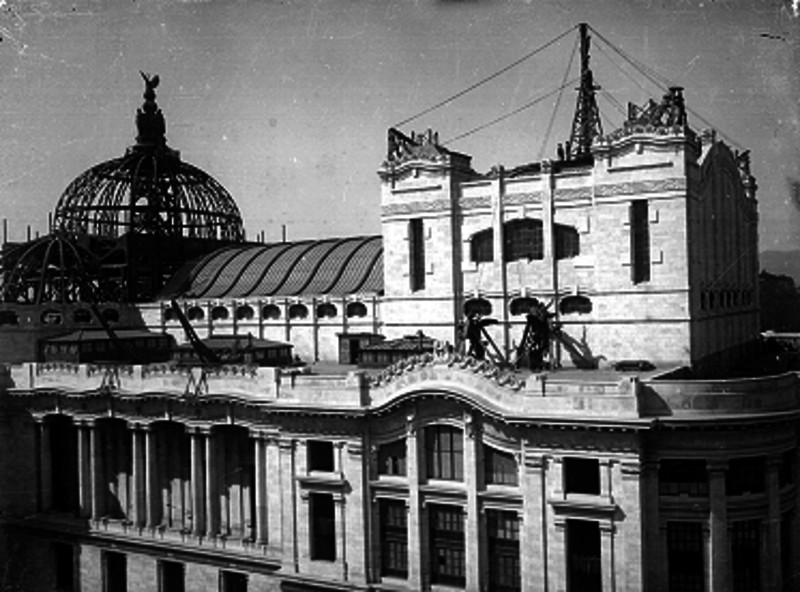

Mexico City is renowned for its many ancient buildings of extreme beauty. Its streets are full of temples dating back hundreds of years, buildings with various European styles and other works to delight and rest the eyes.
And one of the most emblematic is, without a doubt, the famous Palace of Fine Arts located next to one of the oldest parks in the capital: the Alameda Central.
This architectural work was one of the main tasks of the government of Porfirio Díaz and its project to modernize and beautify the country's capital in order to bring it up to other European cities of the time.
Leaving the City without one of its most beautiful theaters in the early 1900s, the former president and former military man decided to replace it with one that surpassed it in beauty, size and technology.

For this work, the French architect Adamo Boari was hired, who began construction in 1904 after visiting the best theaters in Europe for inspiration. In addition to planning the construction, he also imagined the ornamentation that would embellish his work. Thus, he also caught a glimpse of the famous pegasi that would accompany the Palace.
The figure of the pegasi, winged horses of Greek classical mythology, symbolize the ascension, the elevation of the geniuses of drama and lyric towards Parnassus, the mountain where muses live. Imagination and creativity are the characteristics that are attributed to the mythical animal.
The four figures, made of bronze by the Spaniard Agustín Querol, were destined to crown the Palace. And they would do it literally, because these would be placed on top of the building, in the outer cube of the stage. They were brought from Spain after several complications and arrived in 1911.
They were raised a year later, when Porfirio Díaz had been overthrown and they were at the top of the Mexican sky until 1921.
However, like several of the famous ruler's projects, they were cut short in part by their exorbitant prices, on the other hand, the advent of one of the most important processes in the history of Mexico: the Mexican Revolution.
The violence, hunger, poverty and the adverse political climate that was experienced in the capital of those revolutionary years left the construction of the Palace of Art Nouveau style.
But another problem arose. Because the weight of the Palace caused its rapid collapse, the sculptures were removed and taken to another place. They ended up several blocks away from the original place where they were planned.
They arrived at the Plaza de la Constitución and were placed on its four corners for 7 years, until they were moved back to the esplanade of the cultural building.
This, on the other hand, was abandoned from 1917 to 1929, when the works continued, which were completed in 1934.
But this time the pegasos would no longer be returned to the heights, as the efforts proved fruitless, so a pedestal was created for them to be kept on the esplanade of the cultural site, where they remained to this day.
The Pegasos had to resign themselves to staying forever in that initial impulse to take flight from the ground of the capital, instead of taking to the skies.
KEEP READING: